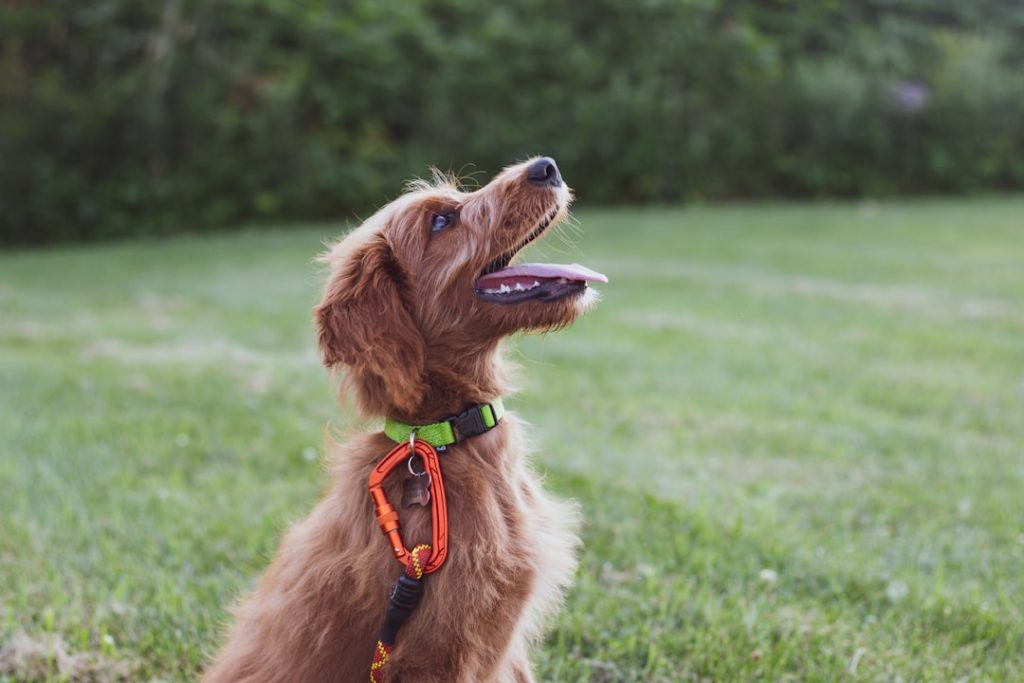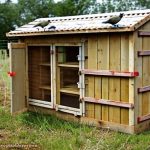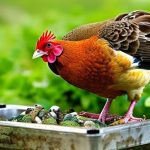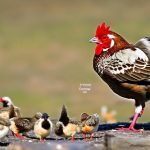Dogs are natural predators with a strong instinct to chase and hunt small animals, including chickens. This behavior is deeply rooted in their genetic makeup, resulting from generations of selective breeding. Understanding this instinct is essential for maintaining the safety of both dogs and chickens.
Dogs possess a powerful prey drive, which can be triggered by the sight, sound, or scent of small animals like chickens. It’s crucial to recognize that this behavior is not indicative of aggression or poor training, but rather a natural instinct that requires management and redirection. Conversely, dogs are social animals with a strong desire to please their human companions.
They respond well to positive reinforcement and are eager to learn and follow commands. By comprehending canine instincts, owners can work with their dogs’ natural behaviors to create an environment where both dogs and chickens can coexist peacefully. While dogs have a strong prey drive, they are also capable of learning and adapting to new situations with proper guidance and training.
Table of Contents
- 1 Securing the Chicken Coop
- 2 Training and Socializing the Dog
- 3 Using Positive Reinforcement
- 4 Supervising the Dog and Chickens
- 5 Providing Adequate Exercise and Mental Stimulation for the Dog
- 6 Seeking Professional Help if Necessary
- 7 FAQs
- 7.1 What are some methods to keep a dog from killing chickens?
- 7.2 How can training help prevent a dog from killing chickens?
- 7.3 What types of physical barriers can be used to keep a dog from killing chickens?
- 7.4 Why is supervision important in preventing a dog from killing chickens?
- 7.5 How can providing distractions or toys help prevent a dog from killing chickens?
Key Takeaways
- Dogs have natural instincts to chase and hunt, which can pose a threat to chickens in a coop.
- Secure the chicken coop with sturdy fencing and consider using a predator-proof design to keep the dog from accessing the chickens.
- Proper training and socialization of the dog can help minimize the risk of aggression towards the chickens.
- Use positive reinforcement techniques to encourage the dog to behave appropriately around the chickens.
- Supervise the dog and chickens when they are together to prevent any potential conflicts.
- Ensure the dog receives enough exercise and mental stimulation to prevent boredom and reduce the likelihood of chasing the chickens.
- Seek professional help from a trainer or behaviorist if the dog continues to pose a threat to the chickens despite efforts to manage the situation.
Securing the Chicken Coop
One of the most important steps in keeping your dog and chickens safe is to secure the chicken coop. This means ensuring that the coop is built with sturdy materials and is predator-proof. Dogs are known for their ability to dig, jump, and even chew through barriers, so it’s crucial to make sure that the coop is well-secured and inaccessible to your dog.
This may involve installing a sturdy fence around the coop, burying wire mesh underground to prevent digging, and using locks or latches that are out of reach for your dog. In addition to securing the physical structure of the coop, it’s also important to keep the chickens safe from potential harm. This means providing them with a safe and comfortable environment inside the coop, with plenty of space to move around and roost.
By securing the chicken coop, you can create a safe space for your chickens where they can thrive without the risk of being harmed by your dog. This also helps to prevent any potential conflicts between your dog and chickens, as it removes the opportunity for your dog to access the chickens in the first place.

Training and socializing your dog are essential steps in creating a harmonious environment for both your dog and chickens. By providing your dog with proper training and socialization, you can help them learn to control their instincts and behaviors around the chickens. This involves teaching your dog basic obedience commands such as “sit,” “stay,” and “leave it,” which can be used to redirect their attention away from the chickens when necessary.
It’s important to be consistent with training and to use positive reinforcement techniques to encourage good behavior. Socializing your dog with the chickens is also an important aspect of training. This can be done by gradually introducing your dog to the chickens in a controlled environment, such as on a leash or behind a barrier.
By allowing your dog to become familiar with the presence of the chickens without being able to chase or harm them, you can help them learn to coexist peacefully. It’s important to monitor your dog’s behavior closely during these interactions and to intervene if necessary to prevent any potential conflicts.
Using Positive Reinforcement
Positive reinforcement is a powerful tool when it comes to training your dog to coexist peacefully with your chickens. This involves rewarding your dog for good behavior with treats, praise, or playtime, which helps to reinforce positive behaviors and encourages them to continue behaving in a desirable manner. When your dog shows calm and non-threatening behavior around the chickens, it’s important to reward them immediately to reinforce this behavior.
On the other hand, it’s important to avoid using punishment or aversive techniques when training your dog around the chickens. This can create fear or anxiety in your dog, which can lead to further behavioral issues and potentially escalate any existing conflicts with the chickens. Instead, focus on using positive reinforcement to encourage good behavior and create a positive association between your dog and the chickens.
By using positive reinforcement techniques, you can help your dog learn to control their instincts and coexist peacefully with the chickens.
Supervising the Dog and Chickens
Supervision is key when it comes to keeping your dog and chickens safe. It’s important to closely monitor your dog’s behavior around the chickens at all times, especially during the initial stages of training and socialization. This may involve keeping your dog on a leash or using barriers to prevent direct contact with the chickens until you are confident in their ability to coexist peacefully.
By supervising your dog’s interactions with the chickens, you can intervene if necessary to prevent any potential conflicts or harm. In addition to supervising your dog, it’s also important to monitor the behavior of your chickens around your dog. Chickens can be easily stressed or injured by a dog’s presence, so it’s important to ensure that they have a safe space where they can retreat if they feel threatened.
By supervising both your dog and chickens, you can create a safe environment where both animals can coexist peacefully without the risk of harm.
Providing Adequate Exercise and Mental Stimulation for the Dog

Providing adequate exercise and mental stimulation for your dog is essential for their overall well-being and can also help reduce their prey drive around the chickens. Dogs that are under-exercised or bored are more likely to exhibit undesirable behaviors, including chasing or harassing small animals such as chickens. By providing your dog with regular exercise, such as walks, runs, or playtime, you can help them release excess energy in a positive way.
In addition to physical exercise, mental stimulation is also important for keeping your dog engaged and fulfilled. This can be achieved through interactive toys, puzzle feeders, or training activities that challenge your dog’s mind and keep them occupied. By providing both physical exercise and mental stimulation for your dog, you can help reduce their instinctual drive to chase or harm small animals such as chickens.
Seeking Professional Help if Necessary
If you are struggling to manage your dog’s behavior around the chickens, it’s important to seek professional help from a certified dog trainer or animal behaviorist. These professionals have the knowledge and experience to assess your specific situation and provide tailored guidance and training techniques to help you create a harmonious environment for both your dog and chickens. They can also provide valuable insights into understanding your dog’s instincts and behaviors, as well as offer practical solutions for managing any potential conflicts.
In some cases, seeking professional help may also involve consulting with a veterinarian to rule out any underlying medical issues that could be contributing to your dog’s behavior. By seeking professional help when necessary, you can gain valuable support and guidance in creating a safe and peaceful environment for both your dog and chickens. Remember that every dog is unique, and what works for one may not work for another, so seeking professional help can provide personalized solutions tailored to your specific situation.
In conclusion, understanding the instincts of a dog is crucial when it comes to keeping them safe around chickens. By securing the chicken coop, training and socializing the dog, using positive reinforcement, supervising interactions, providing adequate exercise and mental stimulation, and seeking professional help if necessary, you can create a harmonious environment where both your dog and chickens can coexist peacefully. With patience, consistency, and proper management, it is possible for dogs and chickens to live together in harmony.
If you’re struggling with keeping your dog from killing chickens, you may want to consider building a secure A-frame chicken coop to protect your flock. This article from Poultry Wizard provides helpful tips and instructions on how to construct a sturdy coop that will keep your chickens safe from predators, including dogs. Check it out here.
FAQs
What are some methods to keep a dog from killing chickens?
Some methods to keep a dog from killing chickens include proper training, supervision, using physical barriers such as fences or kennels, and providing distractions or toys for the dog.
How can training help prevent a dog from killing chickens?
Training can help prevent a dog from killing chickens by teaching the dog to obey commands such as “leave it” or “stay,” as well as reinforcing positive behaviors around the chickens.
What types of physical barriers can be used to keep a dog from killing chickens?
Physical barriers such as fences, kennels, or chicken coops can be used to keep a dog from killing chickens by preventing direct access to the chickens.
Why is supervision important in preventing a dog from killing chickens?
Supervision is important in preventing a dog from killing chickens because it allows the owner to intervene and correct any unwanted behavior before it escalates.
How can providing distractions or toys help prevent a dog from killing chickens?
Providing distractions or toys for the dog can help redirect its attention away from the chickens and provide mental stimulation, reducing the likelihood of predatory behavior.
Meet Walter, the feathered-friend fanatic of Florida! Nestled in the sunshine state, Walter struts through life with his feathered companions, clucking his way to happiness. With a coop that’s fancier than a five-star hotel, he’s the Don Juan of the chicken world. When he’s not teaching his hens to do the cha-cha, you’ll find him in a heated debate with his prized rooster, Sir Clucks-a-Lot. Walter’s poultry passion is no yolk; he’s the sunny-side-up guy you never knew you needed in your flock of friends!







